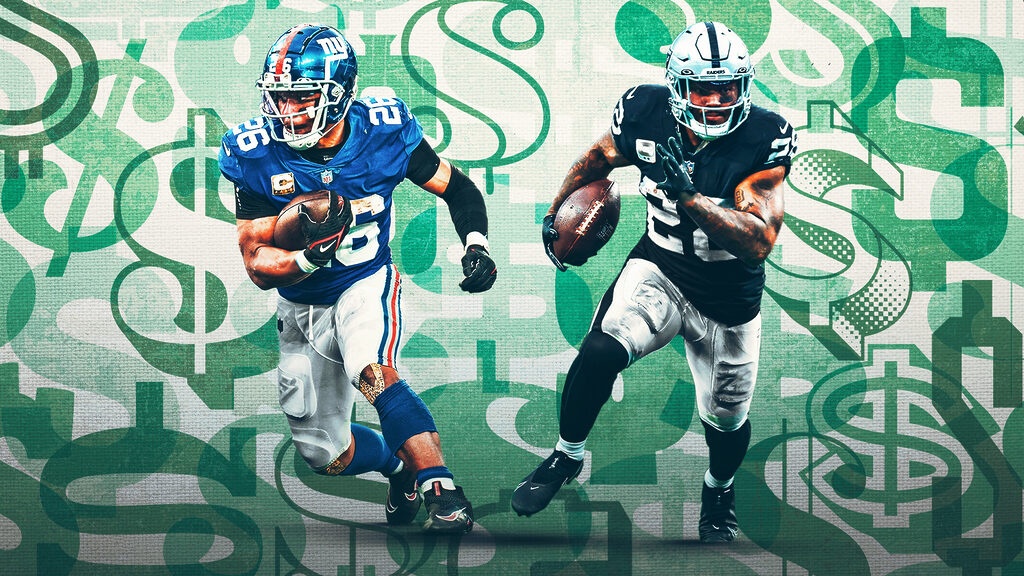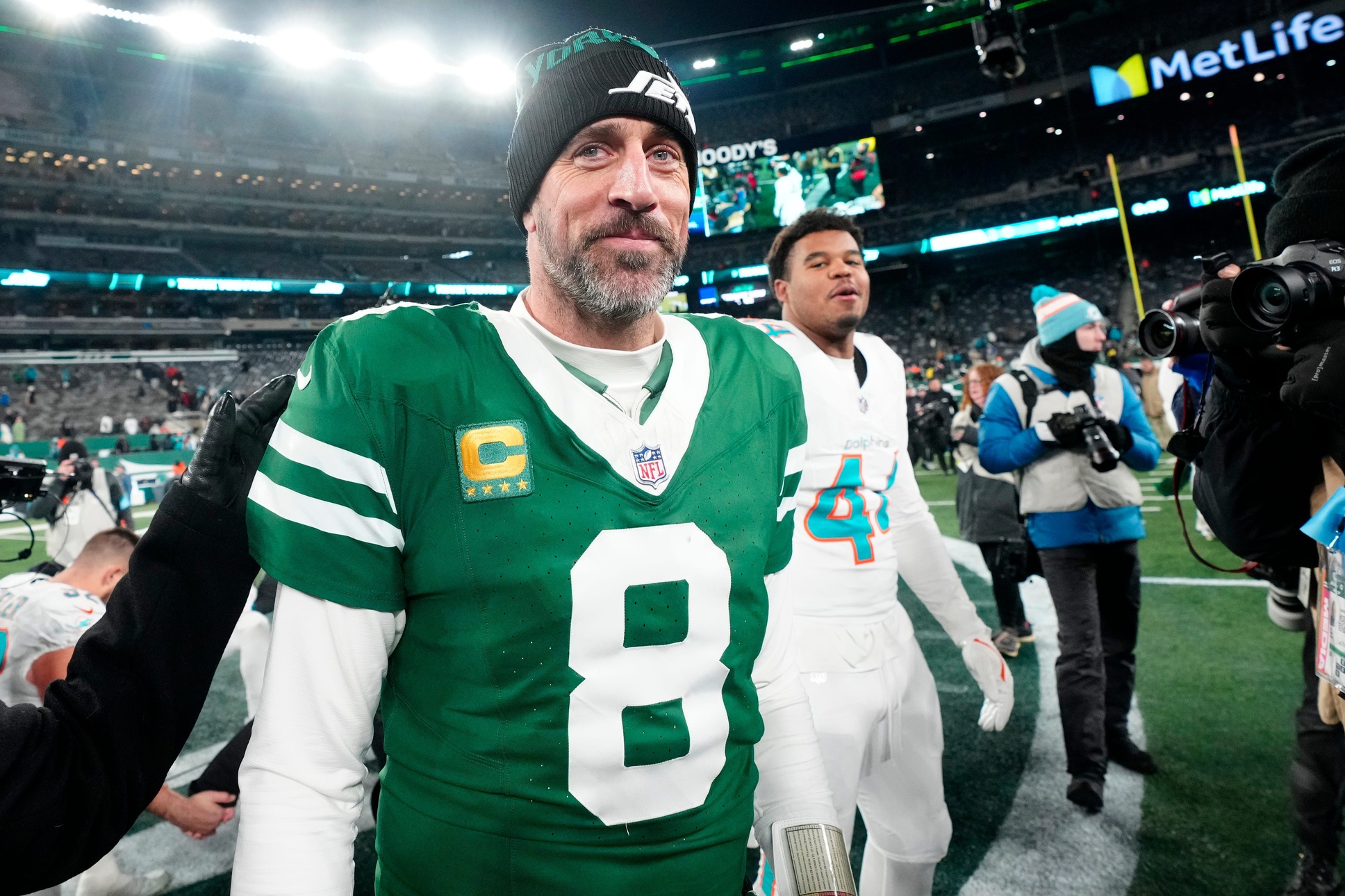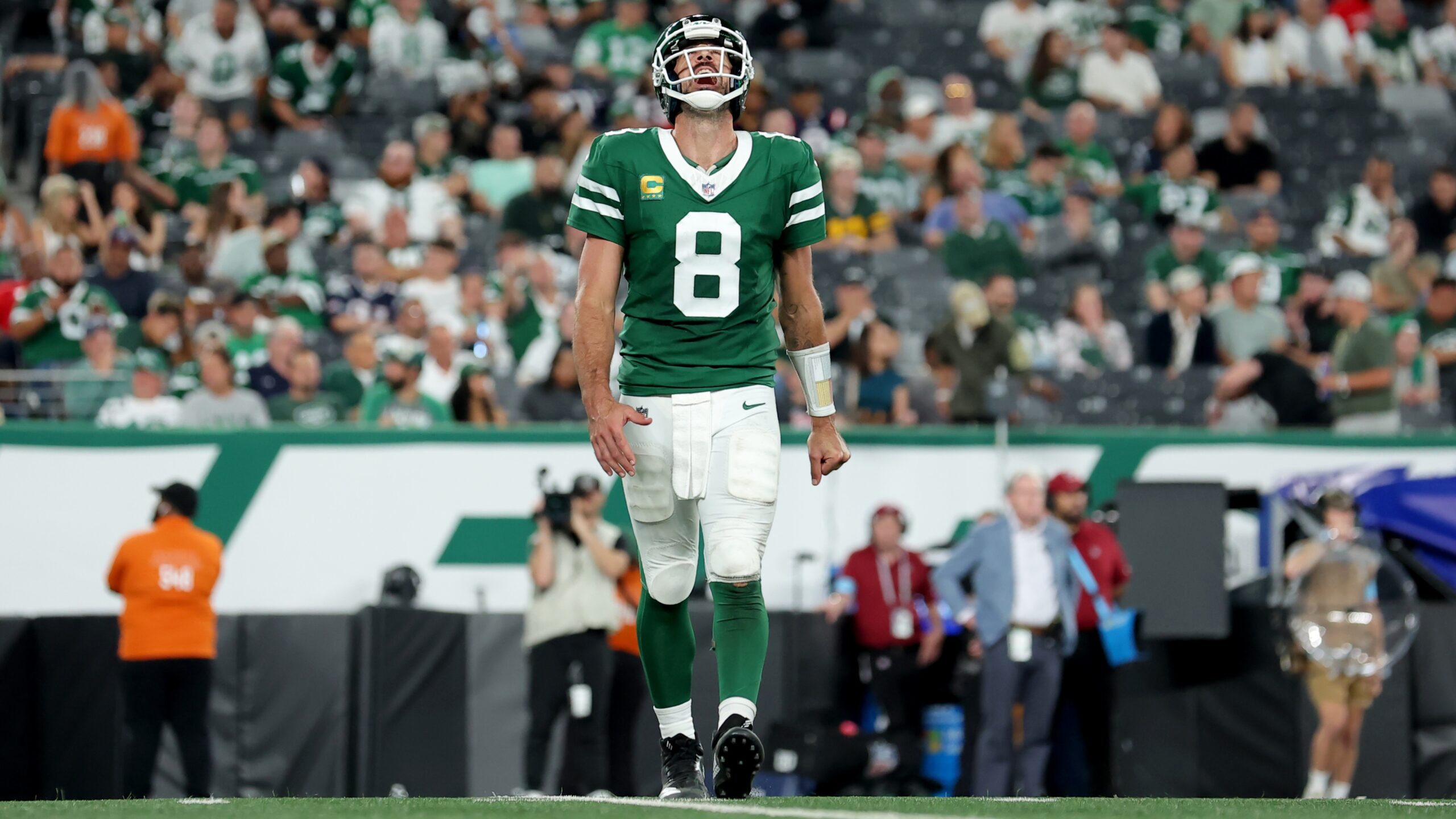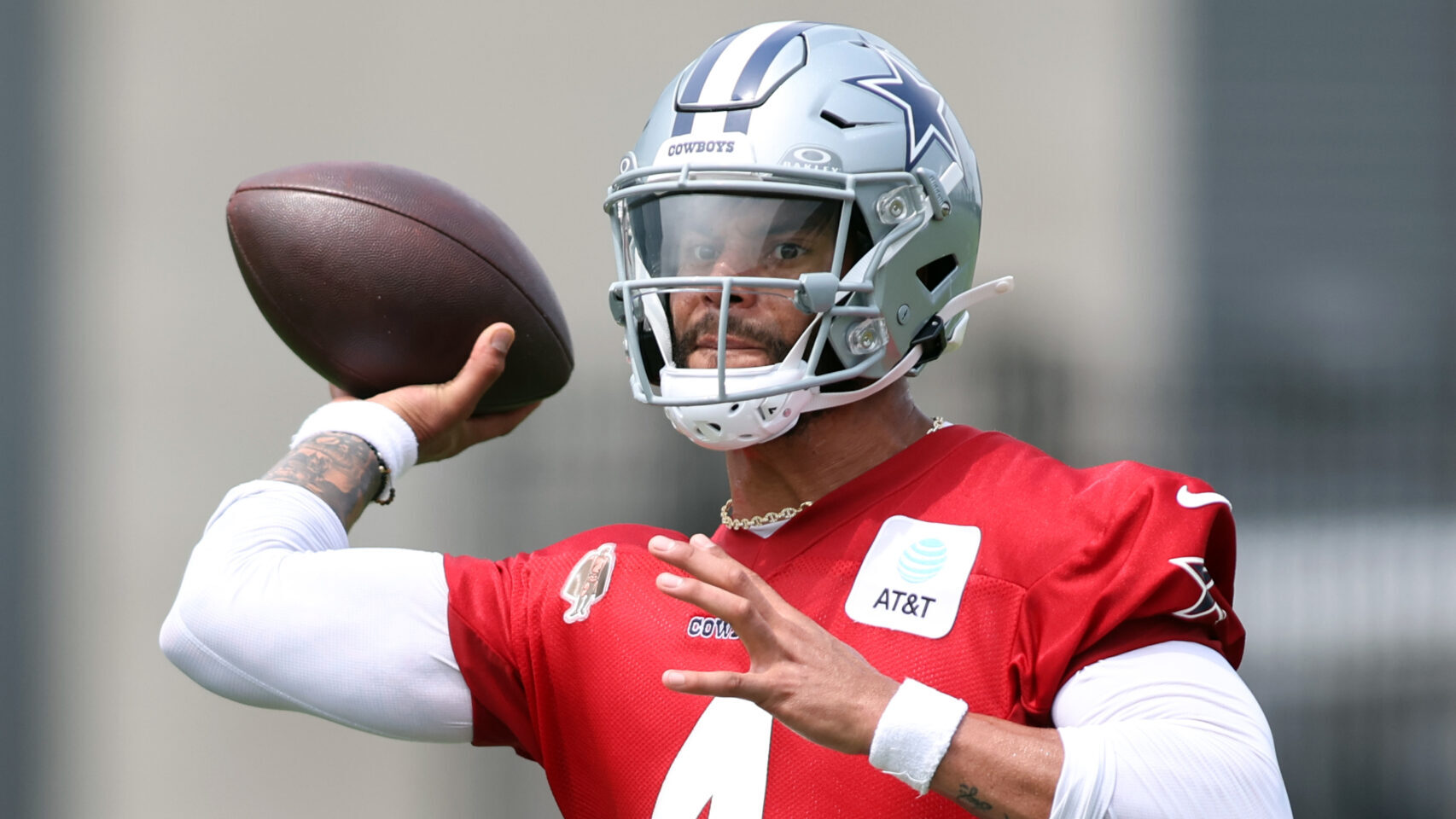Analysis
7/27/23
6 min read
Saquon Barkley's Deal is Way of the World for NFL RBs in 2023

After posturing since February that he might opt to sit out the 2023 season rather than play under the franchise tag if he couldn’t negotiate a long-term deal, Saquon Barkley finally succumbed to the devalued running back market this week. He signed a one-year deal for $11 million, including incentives to elevate the contract above the $10.091 million franchise tender.
Now the focus shifts to last season’s top rusher — Josh Jacobs — who could not get a long-term deal done with the Las Vegas Raiders by the July 17 deadline and has not accepted the one-year franchise tender.
Will Jacobs reluctantly sign a Barkley-like deal on a team that was not in the playoffs last year? Barkley’s $909,000 in incentives are tied to individual and team performance ($303,000 each for 1,350 rushing yards, 11 total touchdowns and 65 receptions with the New York Giants having to make the playoffs as they did in 2022 — no slam dunk this season — to earn each incentive).
The Giants’ two-time Pro Bowl running back made a wise decision to sign and not hold out. He received a $2 million signing bonus along with his $8.091 base salary in the deal, so he gets a chunk of his money sooner.
[bc_video video_id="6331360954112" account_id="6312875271001" player_id="default" embed="in-page" padding_top="56%" autoplay="" min_width="0px" playsinline="playsinline" picture_in_picture="" language_detection="" application_id="" max_width="680px" mute="muted" width="100%" height="100%" aspect_ratio="16:9" sizing="responsive" ]
RBs Come Up Short by Comparison
It’s a reality in today’s NFL that running backs — even those such as Barkley and Jacobs, who are prolific runners and good receiving backs — have a hard time getting paid compared to most other positions that have benefitted from the rapidly rising salary cap, which is up $20 million this year. That's especially true of wide receivers and quarterbacks when looking at offensive skill players.
Most general managers consider running backs, because of the hits they take, to have a shorter shelf life than other positions. And the passing game dominates over most teams’ run games. For example, Kansas City Chiefs running backs contributed only 22 percent of the total offensive production for the Super Bowl champs in 2022 via running the ball and 15 percent of the team’s receiving yardage.
It has to sting Barkley to see the Giants give one of his blockers — LT Andrew Thomas — a $23.5 million per year extension over five years with $67 million guaranteed. In addition, QB Daniel Jones got $40 million per year for four years with $92 million guaranteed. GM Joe Schoen values Thomas and Jones more than Barkley in the team’s long-term planning and is simply paying what he perceives to be market value for a top back.
Barkley says he’s a team player, but he can’t relish having to do this same contract dance with the Giants next year and face another franchise tag at a 20 percent increase to $12.1 million. But that’s his likely fate and that of almost all top backs.
The San Francisco 49ers’ Christian McCaffrey is the highest-paid running back at $16 million per year with three years left on his contract. Along with his 1,139 rushing yards, he also led the backs with 741 receiving yards (on 85 catches) last season which increases his value. But Barkley had 57 receptions (for 338 yards) on top of his career-high 1,312 rushing yards in 2022 and could not parlay that production into a deal closer to McCaffrey’s. Jacobs, who had 53 catches for 400 yards in 2022, is in the same boat.
Austin Ekeler had 915 rushing yards and 107 receptions for 722 yards with 18 total touchdowns last season. However, he had to settle for $1.75 million in added incentives on top of his 2023 base salary of $6.25 million when contract extension talks went nowhere this year. He’s in the last year of his Los Angeles Chargers’ contract and faces a potential franchise tag next February.
RB Salaries Regressing?
Unlike any other position, running back salaries appear to be going backward as highly successful teams, such as last year’s Super Bowl teams, are winning with inexpensive backs. Chiefs’ starter Isiah Pacheco earned $705,000 as a seventh-round rookie.
Miles Sanders made $1.225 million on the final year of his rookie contract with the Philadelphia Eagles last season. He had 1,269 rushing yards and 11 touchdowns as a Pro Bowl back, but the Eagles let him walk in free agency. The best deal he could muster was $6.35 million per year (with only $13 million guaranteed on the four-year pact) with the Carolina Panthers.
Philadelphia has four backs competing for playing time — D’Andre Swift, Rashaad Penny, Kenneth Gainwell and Boston Scott — with none making more than $2 million this season. Meanwhile, top receiver A.J. Brown is at $25 million per year, and tight end Dallas Goedert is making $14.25 million per year.
The Minnesota Vikings released their four-time Pro Bowl back Dalvin Cook in June to avoid paying his $11 million salary after they re-signed his backup Alexander Mattison for $7 million over two years. The Vikings will soon extend All-pro wide receiver Justin Jefferson to a record-breaking extension for receivers in the $30 million-per-year range while Cook remains on the open market.
What Next for Jacobs?
What about Jacobs’ decision-making at this juncture? I would advise him to accept his fate under the current salary structure of the league and sign a slightly elevated deal as Barkley did but try to get the playoff provision removed.
It would be a big mistake for Jacobs to do what Barkley contemplated: the Le’Veon Bell course. Bell sat out the entire 2018 season rather than play under the franchise tag placed on him by the Pittsburgh Steelers. Bell signed with the New York Jets in 2019, but he never made up the $14.5 million he would’ve been paid under a second-straight franchise tag with Pittsburgh the previous season. He also never played as well after missing a season. Bell’s NFL career was over at 29 after a lousy 2021 season.
Everything is cyclical in sports contracts, and there always are exceptions to the rule, such as McCaffrey to a certain extent or Adrian Peterson when he signed a $13.7 million per year deal in 2011, which he reinforced with 2,097 rushing yards as league MVP in 2012 (quarterbacks have won the award every year since then).
Top wide receivers 10 years ago were much closer to top backs salary-wise, with Larry Fitzgerald at $16 million per year on his seven-year deal signed in 2011. Much to the chagrin of Barkley, Jacobs and other top running backs, things have changed dramatically since then, with no sign that the future looks any different for the NFL’s most undervalued position.
Jeff Diamond is a former Vikings GM, former Tennessee Titans President and was selected NFL Executive of the Year after the Vikings’ 15-1 season in 1998. He now works for the NFL agent group IFA based in Minneapolis. Follow him on Twitter at @jeffdiamondnfl.








